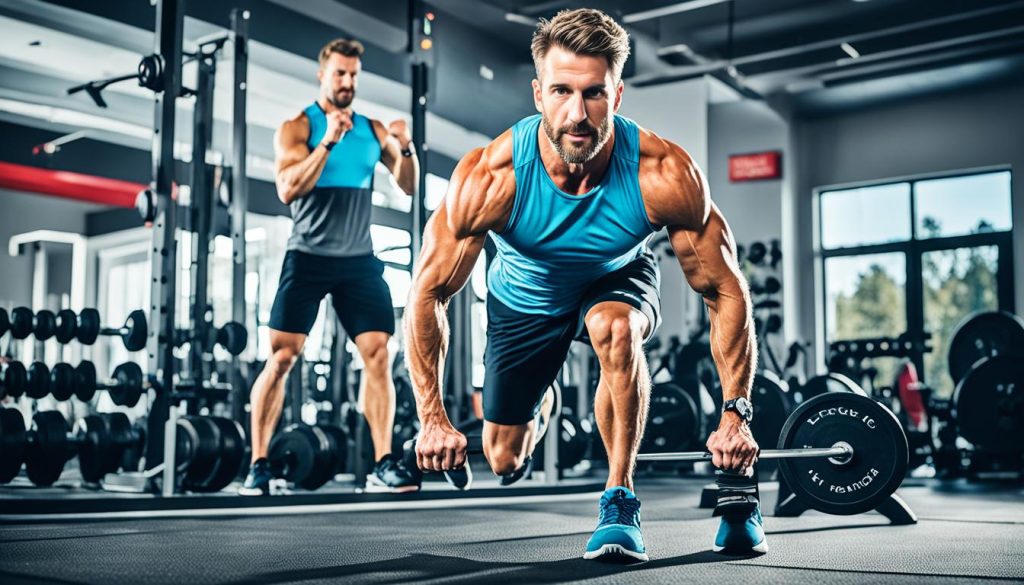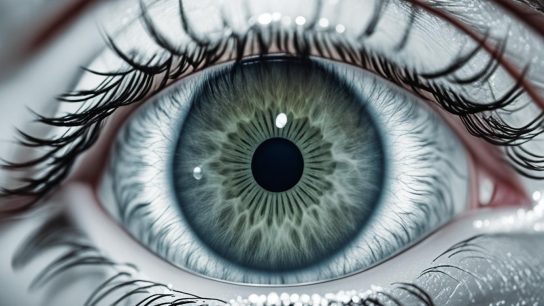Welcome to our article on the continuous nature of the physical fitness concept. In this section, we will explore the perpetual physical well-being and ongoing fitness development that accompanies this dynamic journey. Physical fitness is not a fixed state, but rather an ever-evolving process that requires commitment and consistency.
Describe the Continuous Nature of the Physical
Physical fitness plays a vital role in our overall well-being. It encompasses various components, including cardiovascular endurance, muscular strength and endurance, flexibility, and body composition. Understanding the importance of continuous physical activity is key to unlocking the lifelong fitness benefits that come with it.
When we engage in regular physical activity, our bodies experience positive changes that contribute to improved cardiovascular health, increased muscle strength, enhanced flexibility, better body composition, and numerous other health benefits. By maintaining a consistent exercise routine, individuals can promote overall health, prevent diseases, and enhance their quality of life.
To illustrate the multifaceted nature of physical fitness, let’s take a closer look at its different components:
| Component | Description |
|---|---|
| Cardiovascular Endurance | The ability of the heart and lungs to supply oxygen to the muscles during prolonged exercise. |
| Muscular Strength and Endurance | The capacity of muscles to generate force and sustain repeated contractions over a certain period. |
| Flexibility | The range of motion in joints and the ability of muscles and tendons to stretch without injury. |
| Body Composition | The proportion of fat, muscle, bone, and other tissues that make up our bodies. |
By engaging in continuous physical activity, individuals can improve their physical fitness levels and enjoy lifelong benefits. It’s important to incorporate activities that challenge and stimulate the body in different ways. This variety ensures that all components of fitness are addressed, leading to comprehensive improvements in overall health and well-being.

By embracing physical fitness as a continuous journey, individuals can unlock the potential for perpetual physical well-being. It’s never too late to start or modify your fitness routine. Remember, consistency is key, and small steps can lead to significant lifelong fitness benefits.
The Continuous Journey of Physical Fitness
Physical fitness is not something that can be achieved and forgotten about. It is an ongoing journey that requires consistent effort and commitment. Our bodies are dynamic systems that constantly adapt and respond to various stimuli. To continuously progress in physical fitness, individuals need to challenge their bodies through increased intensity, duration, or complexity of workouts. This concept is known as progressive overload.
Progressive overload involves gradually increasing the stress placed on the body during exercise to promote continuous adaptation and improvement. This can be done by lifting heavier weights, increasing the number of repetitions or sets, or incorporating new exercises that target different muscle groups. By challenging the body in this way, individuals can break through plateaus and achieve new levels of strength, endurance, and overall fitness.
One key aspect of the continuous journey of physical fitness is the perpetual state of fitness. It is essential to embrace fitness as a lifelong commitment rather than a temporary goal. By maintaining a regular exercise routine and making healthy lifestyle choices, individuals can sustain their fitness levels and enjoy long-term health benefits.
In addition to physical exercise, other factors such as nutrition, sleep, and stress management also play a vital role in the continuous progression of fitness. A well-rounded approach that addresses all aspects of well-being is necessary to achieve optimal results and maintain a perpetual state of fitness.
The continuous journey of physical fitness is not only about reaching specific goals but also about enjoying the process and making fitness a part of daily life. By embracing the concept of continuous fitness progression, individuals can unlock their full potential, improve their overall well-being, and experience the numerous physical and mental benefits that come with an active lifestyle.
Adaptation and Progression
Physical fitness is not a static state but rather a continuous process of evolution and improvement. Through regular physical activity, the body adapts and becomes more efficient in performing specific activities, leading to ongoing health and fitness benefits.
One example of adaptation and progression is cardiovascular endurance, which can be enhanced through aerobic exercise. With consistent aerobic workouts, such as running or cycling, the body improves its ability to deliver oxygen to the muscles, resulting in increased stamina and endurance.
Similarly, strength and muscle tone can be developed through resistance training. By gradually increasing the resistance or weight lifted during exercises like weightlifting or bodyweight training, individuals can experience continuous improvements in muscular strength and appearance.
To ensure continuous fitness progression, it is vital for individuals to challenge their bodies and avoid plateaus. This can be achieved by varying exercise routines, increasing intensity, or trying new activities that target different muscle groups.
Benefits of Adaptation and Progression:
- Enhanced physical health and well-being
- Increased muscular strength and endurance
- Improved cardiovascular fitness and stamina
- Enhanced body composition and muscle tone
- Continued motivation and enjoyment of physical activity
By embracing adaptation and progression, individuals can experience ongoing improvements in their physical health and fitness. The combination of consistent effort, challenging workouts, and a commitment to continuous growth allows for a perpetual journey towards optimal well-being.

Maintenance and Sustainability
Once a certain level of physical fitness is achieved, it requires ongoing maintenance to sustain the benefits. Regular physical activity and healthy lifestyle choices play a vital role in maintaining and improving fitness levels. The body adapts to the demands placed upon it, and when physical activity is reduced or discontinued, fitness levels may decline over time.
Consistency is key when it comes to maintaining fitness levels. By staying active on a regular basis, individuals can ensure that their bodies continue to function optimally and reap the long-term benefits of ongoing health and fitness. Whether it’s through structured workout routines, sports participation, or simple daily activities like walking, sustained physical activity supports sustained fitness levels.
Additionally, making healthy lifestyle choices is crucial for sustaining fitness levels. A balanced diet rich in nutrients, proper hydration, and sufficient rest and recovery are important factors in supporting overall health and fitness. These lifestyle choices contribute to the body’s ability to recover, repair, and adapt, ensuring ongoing physical well-being.
To further understand the importance of maintenance and sustainability in fitness, let’s take a look at the following table:
| Effects of Maintenance and Sustainability on Fitness Levels | Benefits |
|---|---|
| Regular physical activity | Improves cardiovascular health, strengthens muscles, enhances flexibility, and maintains optimal body composition. |
| Healthy lifestyle choices | Support overall well-being, provide energy for physical activity, and promote efficient recovery and adaptation. |
| Inactivity or reduced physical activity | May lead to a decline in cardiovascular fitness, loss of muscle strength and flexibility, and increased risk of weight gain and chronic diseases. |
By consistently engaging in physical activity and making healthy choices, individuals can sustain their fitness levels and promote ongoing health and fitness. It’s important to view fitness as a lifelong journey that requires continuous effort and commitment. By prioritizing maintenance and sustainability, individuals can achieve optimal well-being and enjoy the benefits of sustained fitness levels.

Why Fitness is a Continuous Process?
Fitness is a dynamic journey that goes beyond achieving a specific goal. It is a continuous process because our bodies are designed to adapt and respond to physical activity. Regular exercise stimulates physiological changes that improve cardiovascular health, muscular strength, flexibility, and body composition.
Engaging in sustained physical activity is essential for maintaining and improving fitness levels. By making it a habit to consistently participate in physical activities such as walking, running, cycling, or swimming, individuals can enhance their overall well-being and enjoy numerous health benefits.
Physical fitness is not just limited to an isolated workout session; rather, it is about incorporating regular exercise into our daily lives. This could mean taking the stairs instead of the elevator, engaging in active hobbies like gardening or dancing, or participating in organized sports.
Importance of Continuous Physical Activity
The importance of continuous physical activity goes beyond the physical benefits. Exercise has been scientifically proven to have a positive impact on mental health, reducing symptoms of anxiety and depression, improving sleep quality, and enhancing cognitive function.
Furthermore, sustained physical activity helps in managing weight, reducing the risk of chronic diseases such as heart disease, diabetes, and certain cancers. It also strengthens the immune system, enhances bone density, and improves overall longevity.
To illustrate the significance of continuous physical activity, consider the following table:
| Benefits of Continuous Physical Activity | Disadvantages of Sedentary Lifestyle |
|---|---|
|
|
By consistently engaging in physical activity and avoiding a sedentary lifestyle, individuals can reap the benefits of continued fitness development and overall well-being. It is vital to make physical activity a lifelong habit, incorporating it into our daily routine for optimal health.

Conclusion
Perpetual wellness practices are the key to achieving and maintaining physical fitness. It is not a one-time achievement but rather an ongoing journey that requires dedication and consistency. By embracing the continuous nature of physical fitness, individuals can experience long-term success, improved health, and enhanced overall well-being.
Engaging in regular physical activity is essential for perpetual wellness. By incorporating exercise into our daily lives, we can improve cardiovascular endurance, strength, flexibility, and body composition. It is through continuous physical activity that our bodies adapt, grow stronger, and become more efficient.
Furthermore, making healthy lifestyle choices is crucial for sustaining physical fitness. This includes adopting a balanced diet, getting adequate rest, managing stress levels, and avoiding harmful behaviors. By maintaining these perpetual wellness practices, individuals can support their fitness journey and enjoy optimal health.
In conclusion, physical fitness is not a destination but a lifelong commitment. Through perpetual wellness practices, such as regular physical activity and healthy lifestyle choices, individuals can experience ongoing improvements in their fitness levels, overall wellness, and quality of life.




